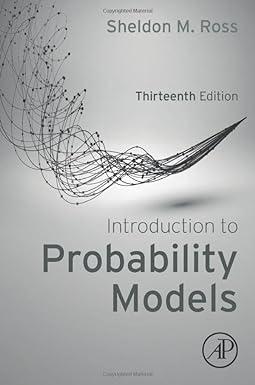Polyas urn model supposes that an urn initially contains r red and b blue balls. At each
Question:
Polya’s urn model supposes that an urn initially contains r red and b blue balls.
At each stage a ball is randomly selected from the urn and is then returned along with m other balls of the same color. Let Xk be the number of red balls drawn in the first k selections.
(a) Find E[X1].
(b) Find E[X2].
(c) Find E[X3].
(d) Conjecture the value of E[Xk], and then verify your conjecture by a conditioning argument.
(e) Give an intuitive proof for your conjecture.
Hint: Number the initial r red and b blue balls, so the urn contains one type i red ball, for each i = 1, . . . , r; as well as one type j blue ball, for each j = 1, . . . ,
b. Now suppose that whenever a red ball is chosen it is returned along with m others of the same type, and similarly whenever a blue ball is chosen it is returned along with m others of the same type. Now, use a symmetry argument to determine the probability that any given selection is red.
Step by Step Answer:







